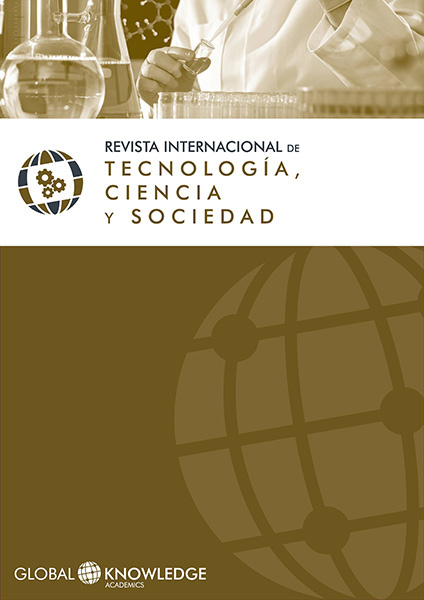Smart drugs: de la terapia al transhumanismo
DOI:
https://doi.org/10.37467/gka-revtechno.v7.1659Palabras clave:
Mejora cognitiva, Nootrópicos, Normalidad, Patología, BiomejoraResumen
La superación de las capacidades cognitivas humanas conforma uno de los ejes centrales de las propuestas transhumanistas. A mitad de camino entre lo actual y lo posible, aparece en las últimas décadas otra forma de aproximarse a la superación de la mente humana: las smart drugs —también conocidas como cognitive enhancers o nootrópicos—, psicofármacos que prometen una mejora de la cognición, la memoria, la inteligencia, la atención, la concentración... Estos fármacos son actualmente empleados en el ámbito terapéutico, pero son muchos quienes consideran que las barreras entre terapia y mejora humana comienzan a desdibujarse. Este trabajo presenta tres smart drugs —metilfenidato, modafinilo y piracetam— y reflexiona sobre los límites entre terapia y mejora, poniendo especial énfasis en los problemas axiológicos que comportan.
Citas
Aragona, M. (2009). About and Beyond Comorbidity: Does the Crisis of the DSM Bring on a Radical Rethinking of Descriptive Psychopathology?, Philosophy, Psychiatry and Psychology, 16(1): 29-33. DOI: https://doi.org/10.1353/ppp.0.0214
Berrios, G. E. (2011). Hacia una nueva epistemología de la psiquiatría. (A. Giaccone & M. V. Schmidt, trans.) Buenos Aires: Polemos.
Eisenberg, L. (2007). Commentary with a Historical Perspective by a Child Psychiatrist: When “ADHD” Was the “Brain-Damaged Child.” Journal of Child and Adolescent Psychopharmacology, 17(3), 279–283. https://doi.org/10.1089/cap.2006.0139 DOI: https://doi.org/10.1089/cap.2006.0139
Escohotado, A. (1998). Historia General de las Drogas. Madrid: Espasa Calpe.
Frances, A. (2014). Saving Normal: an insider’s revolt against out-of-control psychiatric diagnosis, DSM-5, big pharma, and the medicalization of ordinary life. New York: HarperCollins.
Giurgea, C. (1982). The Nootropic Concept and Its Prospective Implications, Drug Development Research, 2: 441-446. DOI: https://doi.org/10.1002/ddr.430020505
Gouliaev, A. H. and Sening, A. (1994). Piracetam and other structurally related nootropics, Brain Research Reviews, 19(2): 180-222. https://doi.org/10.1016/0165-0173(94)90011-6 DOI: https://doi.org/10.1016/0165-0173(94)90011-6
Kendell, R., & Jablensky, A. (2003). Distinguishing between the validity and utility of psychiatric diagnoses. American Journal of Psychiatry, 160(1), 4–12. https://doi.org/10.1176/appi.ajp.160.1.4 DOI: https://doi.org/10.1176/appi.ajp.160.1.4
Kramer, P. D. (1997). Listening to Prozac. A Psychiatrist Explores Antidepressant Drugs and the Remaking of the Self. New York: Penguin Group.
López-Muñoz, F. & Álamo, C.G. (2007). Historia de la psicofarmacología. Tomo 1. De los orígenes de la medicina científica: sobre los pilares biológicos del nacimiento de la psicofarmacología. Buenos Aires: Editorial Médica Panamericana.
Malykh A. G. and Sadaie, M. R. (2010). Piracetam and Piracetam-Like Drugs: From Basic Science to Novel Clinical Applications to CNS Disorders, Drugs, 70 (3): 287-312. DOI: https://doi.org/10.2165/11319230-000000000-00000
Marková, I. and Berrios, G. (2012). Epistemology of Psychiatry. Psychopathology, 45(4): 220-227. DOI: https://doi.org/10.1159/000331599
Ohler, N. (2016). El gran delirio. (Héctor Piquer Minguijón, trad.). Barcelona: Editorial Crítica.
Sanjuán, J., (2016). ¿Tratar la mente o tratar el cerebro? Hacia una integración entre psicoterapia y psicofármacos. Bilbao: Desclée de Brouwer.
Schermer, M. and Bolt, I. (2011). What’s in a Name? ADHD and the Gray Area between Treatment and Enhancement. In J. Savulescu, R. ter Meulen, & G. Kahane (eds.), Enhancing Human Capacities (pp. 179–193). Oxford: Oxford University Press. DOI: https://doi.org/10.1002/9781444393552.ch12
Gyngell, C. & Selgelid, M. J. (2016). Human Enhancement: Conceptual Clarity and Moral Significance. In S. Clarke, J. Savulescu, C. A. J. Coady, A. Giubilini, & S. Sanyal (eds.), The Ethics of Human Enhancement: Understanding the Debate (pp. 111–126). Oxford: Oxford University Press. DOI: https://doi.org/10.1093/acprof:oso/9780198754855.003.0008
Visser, S. N.; Danielson, M. L.; Bitsko, R. H.; Holbrook, R.; Kogan, M. D.; Ghandour, R. M.; Perou, R. and Blumberg, S. J. (2014). Trends in the Parent-Report of Health Care Provider-Diagnosed and Medicated Attention-Deficit/Hyperactivity Disorder: United States, 2003–2011, Journal of the Americal Academy of Child & Adolescent Psychiatry, 53(1): 34-46. https://doi.org/10.1016/j.jaac.2013.09.001 DOI: https://doi.org/10.1016/j.jaac.2013.09.001
Wakefield, J. C. and Horwitz, A. (2016). Psychiatry’s Continuing Expansion of Depressive Disorder. In J. C. Wakefield & S. Demazeux (eds.), Sadness or Depression? International Perspectives on the Depression Epidemic and Its Meaning (pp. 173–204). Dordrecht: Springer. DOI: https://doi.org/10.1007/978-94-017-7423-9_12
Westcott, K. J. (2005). Modafinil, Sleep Deprivation, and Cognitive Funcion in Military and Medical Settings, Military Medicine, 170 (4): 333-335. DOI: https://doi.org/10.7205/MILMED.170.4.333
Descargas
Publicado
Cómo citar
Número
Sección
Licencia
Aquellos autores/as que publiquen en esta revista, aceptan los términos siguientes:
- Los autores/as conservarán los derechos morales sobre la obra y cederán a la revista los derechos comerciales.
- Transcurrido un año desde su publicación, la versión del editor pasará a estar en acceso abierto en la web de la editorial, pero la revista mantendrá el copyright de la obra.
- En el caso de que los autores deseen asignar una licencia abierta Creative Commons (CC), podrán solicitarla escribiendo a publishing@eagora.org








